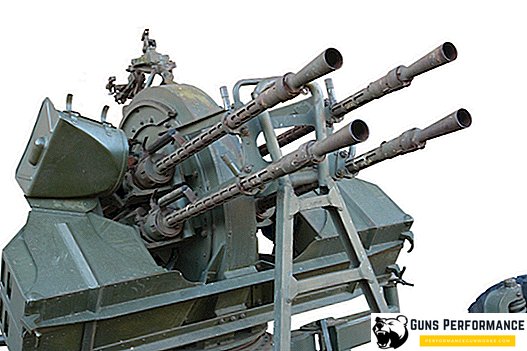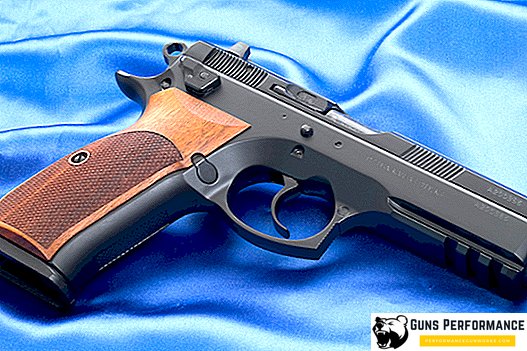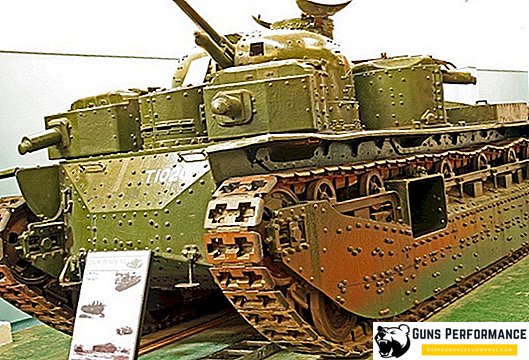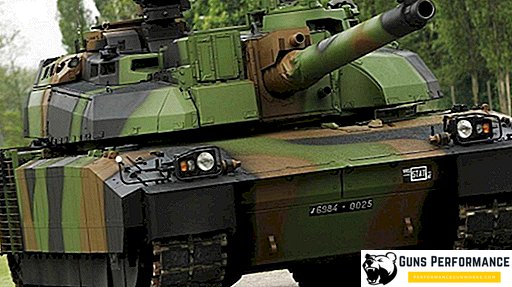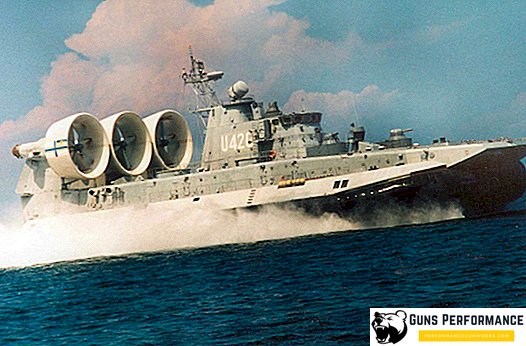
In the event of a global war, one of the top priorities for the Soviet army was to capture the Black Sea and Baltic straits. For the success of such an operation, surprise was needed, that is, the airborne units had to reach the landing point with maximum speed. To provide it, the Soviet naval commanders planned to use unusual amphibious ships - small amphibious hovercraft (MDKVP).
Let you not be misled by the word "small", Soviet hovercraft (SVP) were the largest in the world, and the displacement of the landing ship of the project 12322 Zubr exceeded 550 tons. It is the largest hovercraft ever built in the world. Each airship is capable of transporting 550 paratroopers or 3 tanks and a company of marines for 300 nautical miles. In addition, the Bison hovercraft can seriously support a landing force with fire: it is armed with unguided rockets and automatic cannons.
In addition to the unique speed, the hovercraft has other advantages. For conventional amphibious ships that use the ramp, only 17% of the coast of the oceans is available, for SVP this figure is 78%. Such an airship can move not only by water, but also by land. He is even able to overcome small obstacles and minefields. Therefore, ships of the type "Bison" can land landing even in the depth of the enemy defenses.
Developments in this direction were carried out in many countries, but the Soviet Union was the undisputed leader. Looking at the 550-ton hulk of the ship, capable of gliding over water at a speed of 60 knots, you feel pride in the country that was able to create such technical masterpieces.
In 2011, the Russian military leadership decided to stop the purchase of amphibious ships of the project 12322 Zubr. They are planning to replace them with new amphibious ships of various types that still need to be created. Their technical characteristics are not yet known.
Currently, the Russian Navy is armed with two amphibious ships of Project 12322: the Mordovia and the Yevgeny Kocheshkov, and both of them need major repairs.
In addition to the Russian naval forces, the landing craft of the Zubr project are in service with the Greek Navy, from 2000 to 2004 four ships were sold to this country. In recent years, China has shown a great interest in hovercraft.
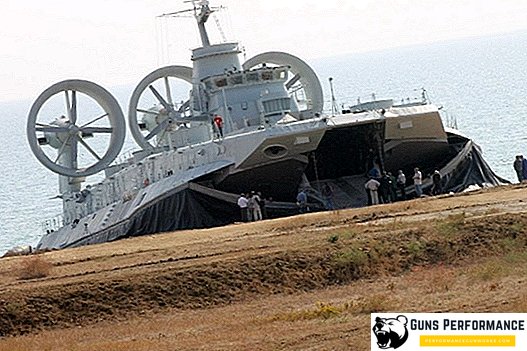
The story of the creation of the landing ship "Bison"
A few decades ago, many experts related to the naval theme believed that revolution in the use of ships and hovercraft was coming in the tactics of warfare at sea. Such vessels had great operational flexibility and could be involved in a variety of functions. Most of all, such an airship was suitable for landing operations.
Work on the creation of such vessels were carried out in the UK, USA, France and China. Interested in a hovercraft and the Soviet admirals.
The Americans began to seriously engage in the development of the SVP after the outbreak of the Vietnam War, the hovercraft proved to be the ideal means to operate in the Mekong Delta. In the West, relatively small ships of this class were built (rather, boats), their main task was to operate in the coastal zone or the landing of troops from large ships.
In the USSR, this issue was approached somewhat differently. Back in the mid-60s, in the Leningrad design bureau "Almaz", they were engaged in the creation of an amphibious assault ship of the project 1232 "Jeyran". And it was definitely not a boat. The ship provided for the transfer of not only paratroopers, but also heavy military equipment: the airship could deliver two T-55 tanks to a distance of 300 nautical miles. The Jayran’s total displacement was 350 tons. This airship became the largest in the world, having nearly doubled the nearest competitor. In addition to the “Djeyranov”, a number of hovercrafts were launched into the USSR: “Lobster”, “Skat”, “Kalmar”.
Soviet industry built for the Navy 18 serial ships of the class "Jayran".

However, the military needed an even larger landing ship.
The commander-in-chief of the Soviet Navy, Admiral Gorshkov and the Minister of Defense Ustinov, were considered hot admirers of the SVP, as were ships created on the basis of dynamic principles of support (ekranoplans, SVP, hydrofoil ships). Therefore, already in 1978, the designers of the Almaz design bureau were assigned the task of developing a more powerful ship called the Bison.
This airship was supposed to take on board three tanks, have a higher speed and enhanced artillery weapons. In fact, the ships of Project 12322 Zubr became the further development of the Jayran. Their construction was planned to begin at once in three plants: in Leningrad, Theodosia and Khabarovsk.
The lead ship of the project 12322 Zubr was laid in 1983, launched in 1986 and two years later it became part of the Soviet Navy. After the tests were carried out, minor changes were made to the design of the subsequent "Bison".
After the collapse of the USSR, five SVP project 12322 were part of the Russian Navy, and three were transferred to Ukraine. In 2000, a contract was signed with the Greek Navy, according to which four ships of project 12322 Zubr were transferred to this country. In 2013, Ukraine manufactured the first ship of the project 12322 for the Chinese Navy.
After the annexation of the Crimea, Russian officials of various ranks repeatedly voiced plans to resume the construction of ships of project 12322 at the Feodosia plant “More”. However, it is not clear how to link such statements with the refusal of the Russian fleet from these ships.
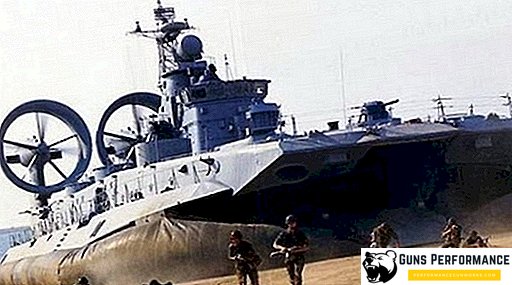
Description MDKVP project 12322 "Bison"
MDKVP project 12322 "Bison" - this is the world's largest ship of this class. It can overcome 300 miles at the speed of a car. To reduce weight and protect against corrosion, the hull is made of aluminum-magnesium alloys, the most important and vulnerable parts and assemblies are protected by aluminum armor.
The basis of the ship hull is, in fact, a pontoon, which provides the ship with stability and unsinkability. The interior of the ship is equipped with soundproofing coatings that reduce the vibration of the hull. Also, residential areas are equipped with air conditioning, heating and ventilation.
The superstructure located on the pontoon is divided into three compartments by longitudinal partitions. In the middle compartment are places for armored vehicles, it is equipped with ramps and tracks for tanks. In the side compartments of the ship is the power plant, accommodation and support systems.
To maintain the airbag, the ship has a flexible enclosure that consists of two tiers. The fence is divided into sections by longitudinal and transverse keels.
The total capacity of the power plant "Bison" - 50 thousand liters. with. It consists of five gas turbine engines, two of which ensure the operation of four NO-10 injection units, which form an air cushion, and three more GTEs drive three screws that give the ship a forward movement. The screws are located in the stern of the vessel, they have four blades and a diameter of 5.5 meters. Each screw is in a special ring nozzle.
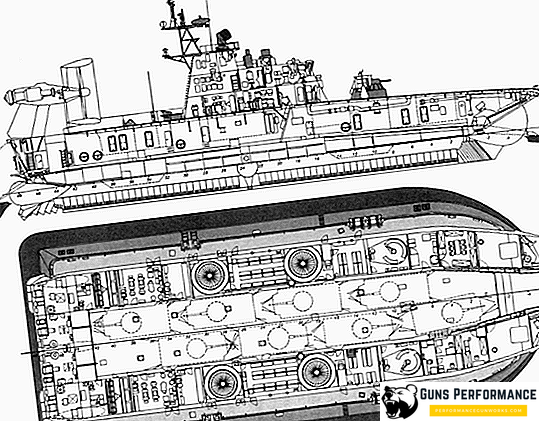
On board there are two additional power plants, each of which has a capacity of 100 kW.
The Zubr SVP can take on board three main battle tanks (total mass not more than 150 tons) or ten armored personnel carriers, or eight infantry fighting vehicles. In addition to military equipment, the ship can take 140 paratroopers, who are placed in four special facilities. Instead of tanks or infantry fighting vehicles, the Zubr can accommodate another 360 people on board (that is, about 500 people altogether).
A folding gate is installed in the forward part of the vessel through which the landing takes place.
All ships of the project 12322 are equipped with two radar stations, satellite navigation system, compasses, driftfish, day and night vision devices. Communication systems provide the ability to negotiate in different bands.
Ships of the project 12322 Zubr can not only deliver and land troops, but also support it with fire. To do this, the ship has two installations MS-227 "Fire", capable of firing uncontrollable 140-mm rocket projectiles, as well as two automatic 30-mm cannons with a fire control system. To protect the ship from the air, the crew can use portable Igla anti-aircraft missile systems.
It should be noted that even the developers do not know the maximum speed of the Bison SVP. During the tests, they dispersed the ship to 70 knots, but at such speeds there is a dangerous and little-studied effect - the mean-part of the flexible part of the vessel's fencing.
Most experts associated with the navy, believe that the ships of the project 12322 "Bison" for several decades ahead of their time. However, these ships have serious drawbacks.
Firstly, these ships are expensive, their operation is even more costly: the cost of one of the ship’s five turbines is about $ 1 million, its lifespan is about 4 thousand hours. Turbines for "Zubr" were manufactured at the Zarya Nikolaev plant, at present Ukraine has stopped military-technical cooperation with the Russian Federation.
Secondly, the Zubr air cushion ships have a low level of protection, which causes well-founded concerns about their survivability. It should not be forgotten that this low-armored ship is filled with flammable fuel. Do not differ SVP and profitability.
To date, ships of this type have not participated in serious clashes with a well-armed enemy, so their combat effectiveness is questionable.
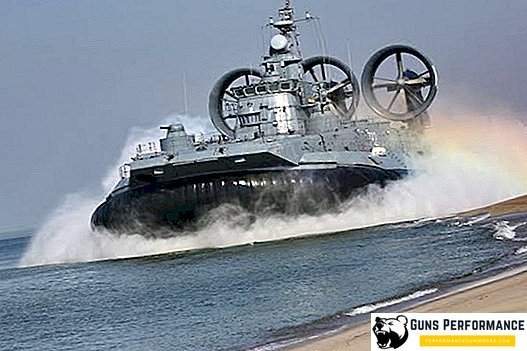
Technical characteristics MDKVP "Bison"
| Crew | 27-31 people, including officers - 4, midshipmen - 7 |
| Length m | 57,3 |
| Width, m | 25,6 |
| Height, m | 21,9 |
| Displacement, t | 555 |
| The total power of the power plant, l. with. | 50 000 (5×10 000) |
| Propellers | 3 air screw |
| Speed, knots | 60 |



